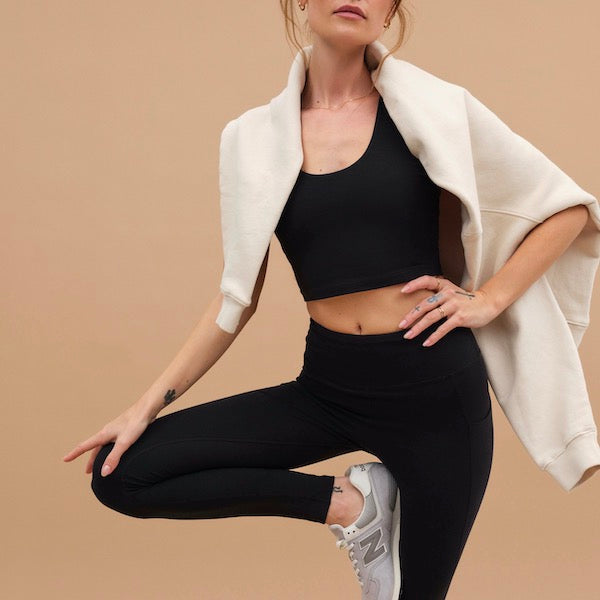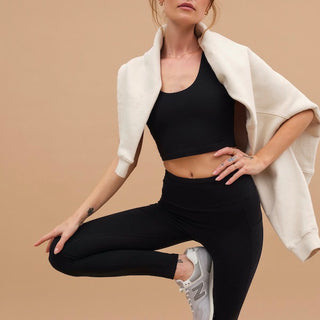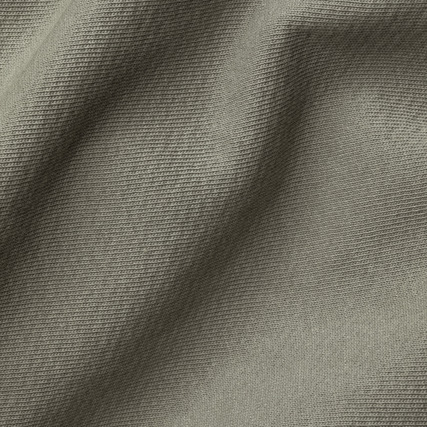Your Tote (0)
Organic Choices For You
2021 Impact Report
The MATE Manifesto
With such a big vision, we are constantly learning, making mistakes, and finding new ways to improve. That’s why it’s so important that we stay accountable by providing visibility into our annual impact.
Dress Clean®
Carbon Impact + Offsets

Every business, no matter how sustainable, has an environmental impact. At MATE, we make it a priority to source lower impact materials and minimize our emissions as much as possible. We are able to call ourselves Certified Climate Neutral because we offset our yearly carbon emissions by funding carbon offset projects, and we make yearly objectives to reduce our impact.
The majority of our carbon impact comes from making our products. Emissions from other facets of our business like our office, employee commutting, and business travel are small because we have a lean, mostly remote team.


These numbers include all scope 1, scope 2, and scope 3 emissions outlined in the chart below. In summary, this is the entire impact of our business up until the product arrives at your door.
| Scope 1 |
Scope 1 Fossil fuels used by owned or leased facilitiesFuel consumed by owned or leased vehicles |
| Scope 2 |
Scope 2 Electricity used by owned or leased facilitiesSteam bought and used by owned or leased facilities |
| Scope 3 |
Scope 3 Purchased goods and servicesCapital goods Upstream emissions from fuel and energy Upstream transportation and destribution Waste from operations Business travel Employee commuting Downstream transportation and distribution |

Company Carbon Savings
As MATE has grown, so has our impact. However, by sourcing lower impact materials, we have been able to limit our emissions. This chart illustrates our carbon savings in comparison to using conventional materials
Carbon Intensity
Because demand for MATE has grown, we made a greater number of products
in 2021 than ever before. As a result, our overall impact also increased.


As we continue to scale, an increase in impact is inevitable. That's why in 2021, we examined our carbon intensity in order to limit emissions on a per product basis. In the long run, this will help us keep our emissions to a minimum.
Our Offset Projects
We offset our yearly carbon emissions by funding carbon offset projects that remove an equivalent amount of carbon from the atmosphere. These offsets not only mitigate climate change but also have social co-benefits such as habitat restoration, cleaner air and water, and increases in biodiversity.
These are the carbon offsets we purchased to balance out our 2021 emissions:

Capricorn Ridge Wind Project
Texas, USA
662.5-megawatt wind energy project that serves as a source of renewable energy and reduces water and air pollution associated with fossil fuel electricity production.

Doo Doo Does More
Maharashtra, India
This project reduces methane emissions by supplying rural families in India with biodigesters. Biodigesters take cow dung and decompose it into cooking fuel and fertilizer which is used by the families.
A Look Back and a Look Forward
Carbon offsets are a great place to start but they should never be the end of a company’s climate strategy. That’s why we look for other ways to reduce our physical emissions. To hold ourselves accountable, here’s an update on our 2020 goals:
| Goal | Progress |
|---|---|
| Gather all of our cotton cut scraps to be recycled and used in new MATE products. | We were able to collect and recycle all of our cotton cutting table scraps. These scraps were sent to a mechanical recycler in Guatemala that is creating a recycled fabric we will use in 2022. |
| Give customers the option to send in used MATE goods to be recycled. | We made a lot of progress on this initiative in 2021 but just missed the end of year deadline. We will be going live with this option in early 2022! |
| Manage the carbon intensity of MATE’s business. As a young, growing company we are looking to scale our business while restricting our environmental impact. | We were able to set and abide by restrictions on the carbon intensity of our business, helping to decouple company growth and carbon impact. |
|
Goal Gather all of our cotton cut scraps to be recycled and used in new MATE products. |
|
Progress We were able to collect and recycle all of our cotton cutting table scraps. These scraps were sent to a mechanical recycler in Guatemala that is creating a recycled fabric we will use in 2022. |
|
Goal Give customers the option to send in used MATE goods to be recycled. |
|
Progress We made a lot of progress on this initiative in 2021 but just missed the end of year deadline. We will be going live with this option in early 2022! |
|
Goal Manage the carbon intensity of MATE’s business. As a young, growing company we are looking to scale our business while restricting our environmental impact. |
|
Progress We made a lot of progress on this initiative in 2021 but just missed the end of year deadline. We will be going live with this option in early 2022! |
MATE's 2022 Goals
Goal 1
Incorporate recycled fabrics into our product line
Goal 2
Source U.S. grown cotton that uses carbon farming / regenerative practices to reduce the impact of our cotton and promote healthy California soils.
MATE's 2022 Goals
Goal 1
Incorporate recycled fabrics into our product line
Goal 2
Source U.S. grown cotton that uses carbon farming / regenerative practices to reduce the impact of our cotton and promote healthy California soils.
Product Impact
Here is the average carbon impact of our product categories along with the average carbon savings compared to using non-organic or less sustainable materials.
SHIRTS
31.5% reduction
JACKETS
22.5% reduction
PANTS
21.3% reduction
SWEATERS
21.8% reduction

Materials
Natural, organic, plastic-free—we only choose materials that come from the soil and can return to the soil. That means Organic Cotton, TENCEL™ Lyocell, and flax Linen. We have made a commitment to never source synthetics like polyester and nylon, with the exception of 8% spandex in our Organic Stretch (because we might be laughed out of the yoga studio if we made non stretchy leggings!).
Our Fabric Impact Summary
Impact of Fabric
The following graph illustrates the carbon footprint (kgCO2e) and water impact (m3) of all MATE products color-coded by fabric. As you can see, a lot of the products made with the same fabrics have similar impacts.


2021: Fiber Breakdown


Packaging & Trims
Plastic-free is the way to be. That’s why we paid close attention to even the smallest of details to eliminate plastic from our trims and our packaging.
HANGTAG
MAIN LABEL & SIZE TAG
MAILER
Our Supply Chain
We like to say, keep your MATEs close and your supply chain even closer. Staying local as much as possible not only reduces our emissions, it also allows us to have a deeper relationship with our partners and tap into LA’s rich history of apparel manufacturing.
1. Port of India
The cotton fibers are spun into yarn in India and shipped by boat to Los Angeles
2. Port of Los Angeles
The cotton yarn is then transported to our fabric knitter
3. Fabric Knitter
Cotton yarn is knit into a textile here before going to our cut & sew facility
4. Cut & Sew Facility
Here the fabric is cut and sewn into a garment before going to be dyed
5. Dye House
Here the tee is dyed with GOTS approved organic dyes
6. Shipped to You
The final tee is packed and shipped to our warehouse where is waits for your order
Traceability
How well do we know our own supply chain? We work closely with all of our Tier 1 and Tier 2 suppliers. As we move to Tier 3, things become a bit more complicated. We are able to trace the yarn mills and cotton gins that our cotton comes from but as we move into Tier 4, we are not able to identify the specific farms our cotton is sourced from. For our flax Linen and TENCEL™ Lyocell pieces, we know the country the fiber and yarn are sourced from but cannot identify the specific facility.
TIER 1
Finished goods factories, aka cut & sew facilities
TIER 2
Fabric mills & dye houses
TIER 3
Yarn spinners
TIER 4
Farms and other raw materials providers

Plans To Improve
We are currently working with a California based cotton farm that is growing climate beneficial cotton. The cotton we source from this farm will be 100% traceable and made 100% in the USA.

Plans To Improve
We are currently working with a California based cotton farm that is growing climate beneficial cotton. The cotton we source from this farm will be 100% traceable and made 100% in the USA.

Planes emit 30 times more CO2e than boats. In this case, slow and steady wins the race.
Any transportation for production is done by boat. Boats may be slower than planes but they emit far less carbon dioxide to transport the same amount of goods. In fact, planes emit 30 times more CO2e than boats. In this case, slow and steady definitely wins the race.

Factory Code Of Conduct
Another requirement we have had since day one is a ban on piece rate pay. This is a practice in which factories pay employees by the number of garments they produce as opposed to an hourly rate. Piece rate pay often leads to wages that are below minimum wage and unsafe working conditions. Fortunately, this practice has been banned in the state of California through Senate Bill 62. This was a huge victory for all who work in the garment industry, especially in the City of Los Angeles.
Team Dress Clean™
Since the beginning, our MATEs have been women of all colors, shapes, and sizes who give a damn about their bodies, their impact, and the world around them. We have always put women at the center of everything we do. But as we look to the future, we know that our Dress Clean® mission has the potential to make an even greater impact. In 2021, we wanted more people to have access to our essentials. That’s why we decided to expand beyond women’s apparel and continue making our apparel more inclusive and accessible.

We Launched
MINI MATE
MINI MATE, our collection for kids and babies.
MATE MEN’S
Starting with three premium Fleece styles and a classic Organic Cotton Tee.

We Expanded
EXTENDED SIZING
Our size-inclusive product offering. In 2021 we started offering size ranges from XS-3X. In 2022 we plan to expand this offering to more products.

We Reduced
PRICING
The pricing of our Organic Cotton styles by up to 25%. In 2021, we shifted to an exclusively direct-to-consumer model which enabled us to lower the retail price of many of our essentials.
Growing Our Community
We are fostering a community of support around environmental and social issues.




12 Meetings With Thought Leaders:


A Year Of WTFs
We’re all about spreading clean knowledge to our community. Our WTF series on Instagram focuses on raising awareness of important environmental and social topics, and making them easy to understand. We were able to reach 599,792 people with this content in 2021. Here is a little highlight reel of our most popular WTF moments:
Employee Benefits
We are happy to offer benefits to our employees that support their mental, physical, and emotional wellbeing as well as offering full medical, dental, and vision.
Charitable Impact
MATE donates 1% of sales to non-profit partners that are committed to saving the planet. In addition to our other sustainability initiatives, we consider these 1% donations as a self-imposed environmental tax. This is something we are committed to doing no matter how profitable we are.
Partnership With BEAM Impact
You may have noticed that our checkout experience got an upgrade in 2021. We partnered with BEAM Impact to give you the opportunity to decide where you want to donate 1% of your order. Here’s how your donations were distributed between our four partner non-profits:
20%
FIBERSHED
21%
LOS ANGELES NEIGHBORHOOD LAND TRUST
42%
SURFRIDER FOUNDATION

17%
WOMEN’S VOICES FOR THE EARTH
Partnership With BEAM Impact
On Giving Tuesday in 2021, we wanted to do even more good. So we upped our donation amount from 1% of every purchase to 5%. Thanks to our MATEs who shopped to support on Giving Tuesday, our community funded:

The Clean Council
We are a small brand with big sustainability goals. While we have a dedicated internal sustainability team, we also want to tap into the industry’s best and brightest for advice on scaling a truly responsible company. With that in mind, we assembled what we believe to be the dream (clean) team. This group will work with company leadership and our sustainability team to ensure MATE is using the best science and industry knowledge on issues like microplastics, climate action plans, and chemical impacts.
What's Next


BCorp Certification
We are currently going through the process of becoming a BCorp. This certification has taken longer than expected because SO MANY companies are realizing they must incorporate people & planet into their business model and are pursuing the certification. We are hoping to become officially certified in 2022!
Stories From The Farm
For over a year, we have been planning something major—a single project that unites climate action, traceability, and a commitment to regional and domestic cotton farming and textile manufacturing.
We partnered with a group of brands to work precompetitively to implement regenerative carbon farming practices on two farms in the California Central Valley.
reMATE
Throughout 2021, we collected all of our cutting table scraps to be recycled into new MATE products. Now, we want to expand our circularity program to include your ready-to-retire apparel. In 2022, you will be able to send in your old MATE items for store credit. The plan was to launch this part of our circularity strategy in 2021 but we’re coming clean . . . we fell short! The new plan is to launch in the spring.



























